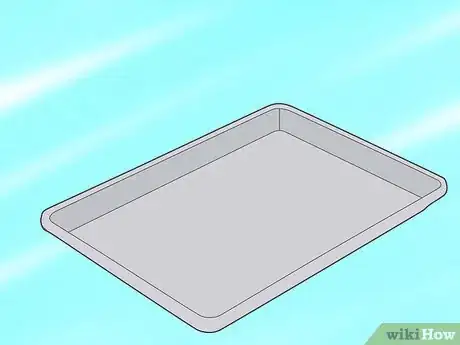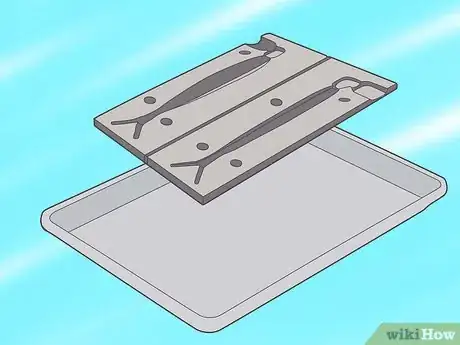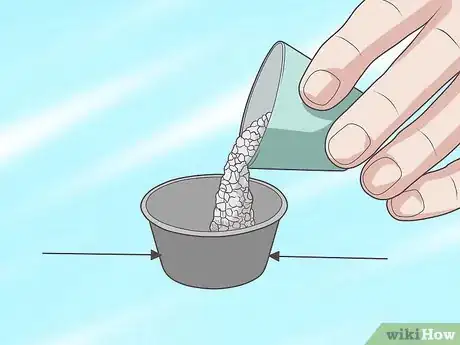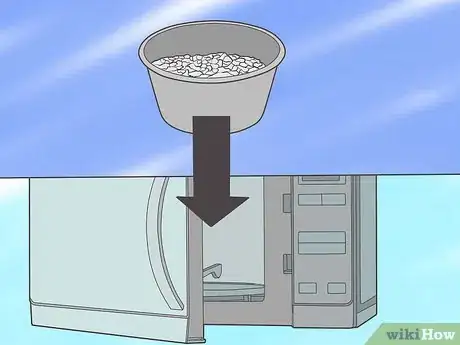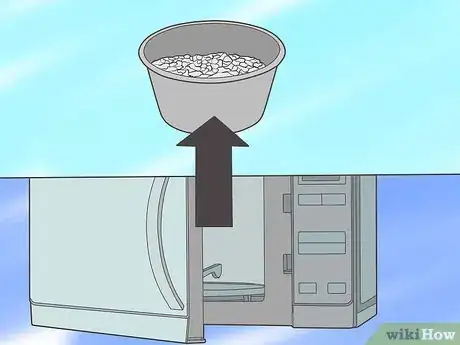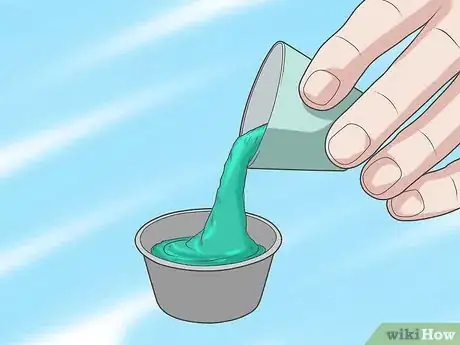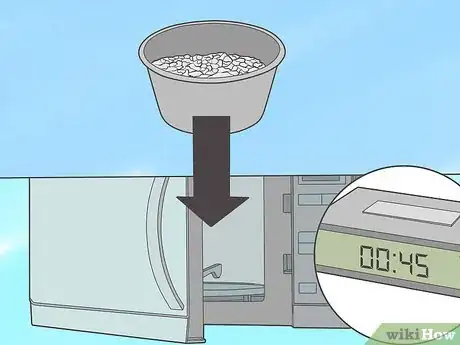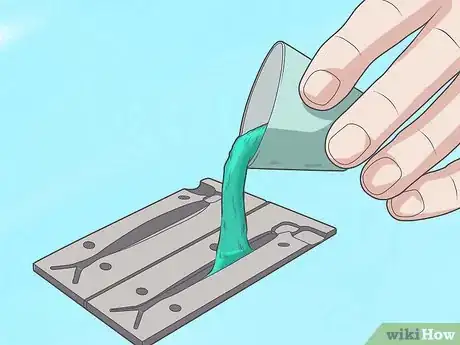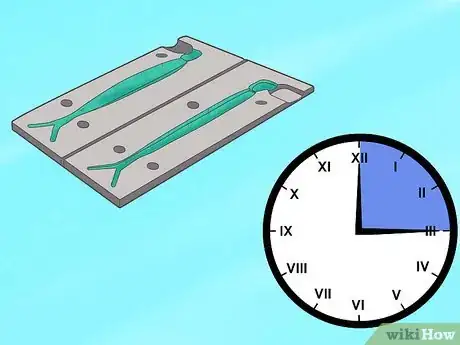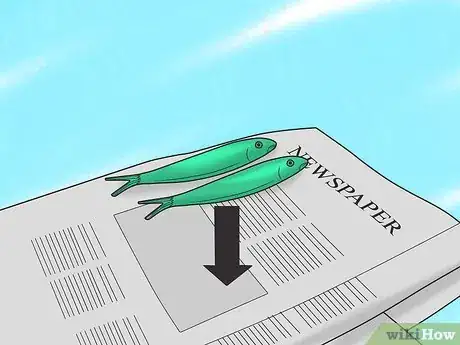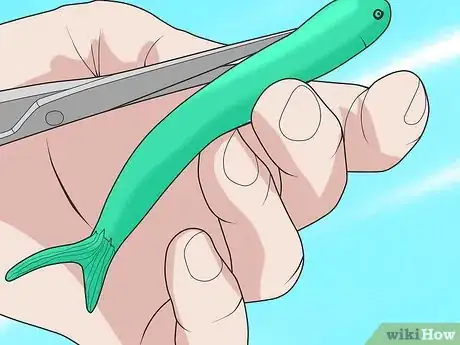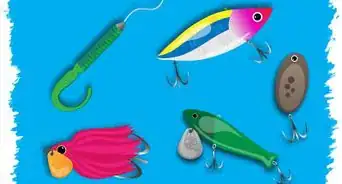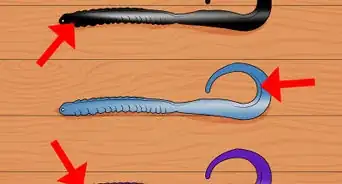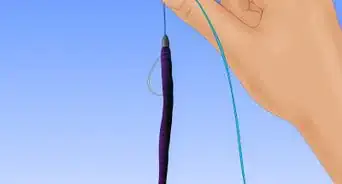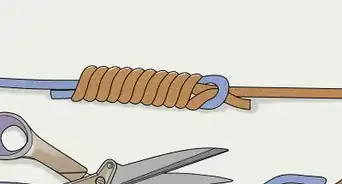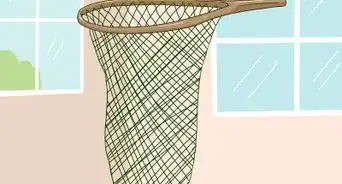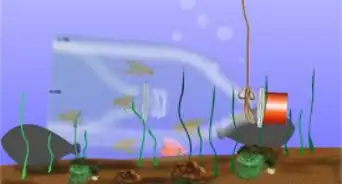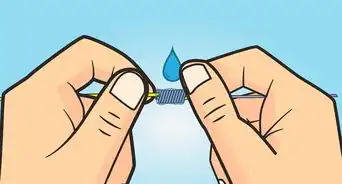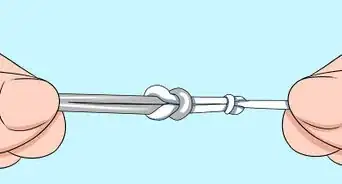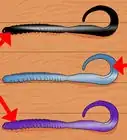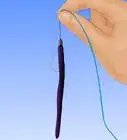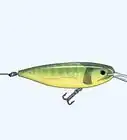This article was co-authored by Michael Reynolds. Michael Reynolds is a Professional Fishing Instructor and the Owner of Long Beach, California Fishing Lessons by Michael Reynolds. In his over 40 years of fishing experience, Michael has become very knowledgeable about the variety of fishing methods and techniques. He is passionate about sharing his knowledge with beginners to experienced anglers. Michael has been guiding and teaching fishing for over five years and is licensed and bonded with the Department of Fish and Wildlife (DFW).
This article has been viewed 182,047 times.
Soft plastic lures have been available since the plastic worm was introduced to the market in 1951. Over time, the plastic worm has expanded from its original straight-tail design to include paddle-tail, forked-tail, and ribbon-tail designs and has been joined by plastic grubs, plastic salamanders, and other soft plastic creations. Although soft plastic lures are available from such manufacturers as Crème, Mann, and Bass Buster, you can make your own plastic worms and grubs to mimic what the manufacturers produce or in color schemes they don't.
Steps
Preparing the Resin
-
1Choose a suitable work space and put on protective gear. Look for a place with good ventilation where burns and spills won't matter. Put on gloves and goggles to protect yourself.[1]
-
2Put your mold on a heat-resistant surface. An old baking pan works well for this purpose. If you're making more than 1 soft plastic lure, you can arrange several molds on the pan.Advertisement
-
3Spray the mold cavities with cooking spray. This will make it easier to remove the soft plastic lure from the mold after it cools and solidifies. Be aware that the cooking spray may affect the smell of the lure.[2]
-
4Fill a microwave-safe measuring cup half-full of plastic resin. If you fill the cup fuller than this, you may have difficulty pouring the resin into the mold once it's heated.[3]
- If you're melting down old soft plastic lures, put them in the cup in place of the resin.
-
5Microwave the resin in 30 second increments until it is clear. As the resin heats, it will first thicken and then thin, changing from a milky white to clear. Microwave the resin in 30 second increments until it is clear. Stop heating at once if you see smoke.[4]
-
6Remove the cup of resin/plastic from the microwave. The cup may be hot, so use a pot holder and exercise caution.[5]
-
7Add a few drops of your desired color. Add the color drop by drop until you have the shade you want. Stir the resin slowly as you add color.[6]
- Most fish food is either green or orange, so these colors are a great choice.
- Match the hatch. Look for baitfish, or other types of possible bait living in the area to be fished, and match their colors.
-
8Add scents, flavorings, and glitter if desired. Use only non-metal glitter to avoid starting a fire in the microwave. As with color, add scents and flavorings gradually in small amounts.[7]
-
9Return the cup to the microwave and heat on high for 30 seconds. This allows the color, flavoring, scents, and glitter to be incorporated into the resin.
Filling the Mold
-
1Pour the colored plastic into your mold slowly, filling it. This will prevent bubbles from forming.[8]
- It may take several tries before you learn to fill the mold to the right level.
-
2Wait 10 to 15 minutes for the plastic in the mold to cool. You must let the plastic cool before removing it from the mold, or it won’t form correctly.
-
3Remove the plastic lure from the mold. Carefully pop the lure out of the mold by turning it upside down and pressing on the bottom of the mold.[9]
-
4Place the plastic lure on a paper towel or old newsprint to cool overnight. Be sure to lay the molded plastic out flat, as it will set in the position in which you lay it out.
- If the lure does set in a crooked position, you can melt it down and re-pour it.
-
5Trim off any excess plastic. First, transfer the soft plastic lure to a cookie sheet or baking pan. Trim the excess with a craft knife, scissors, or a pizza cutter.
- As you trim the excess, gather it together. You can melt it down and add it to your next soft plastic lure, or you can add the shavings at the very end to add highlights to lures of a contrasting color.
Community Q&A
-
QuestionShould I make or purchase my molds?
 Community AnswerIf you make a mold, make it by hand with either metal (not recommended) or a hard plastic. You can find various ways to do this online. If you buy a mold, make sure it's exactly what you want, as they are VERY hard to change without damaging the mold. I personally have made countless molds and I have only ever needed to replace one and they are all hard plastic.
Community AnswerIf you make a mold, make it by hand with either metal (not recommended) or a hard plastic. You can find various ways to do this online. If you buy a mold, make sure it's exactly what you want, as they are VERY hard to change without damaging the mold. I personally have made countless molds and I have only ever needed to replace one and they are all hard plastic. -
QuestionWhere do you get plastic resins?
 Community AnswerYou can get them online.
Community AnswerYou can get them online. -
QuestionHow do I make the mold?
 Community AnswerUse clay or polyurethane resin to make a model of what you want your lure to look like. Then take a container, put the model in there, and superglue it. Then pour a hard plastic resin in the same container as your model. Wait about a day for it to be ready to use.
Community AnswerUse clay or polyurethane resin to make a model of what you want your lure to look like. Then take a container, put the model in there, and superglue it. Then pour a hard plastic resin in the same container as your model. Wait about a day for it to be ready to use.
Warnings
- When putting your homemade soft plastic lures in your tackle box, keep them separate from hard plastic lures, as the PVC in the soft plastic will damage the finish of hard plastic lures. (This may not be true with the glycerin/gelatin plastic described above, but keeping your soft plastic lures separate will also keep your tackle box better organized.) Many tackle manufacturers offer special boxes with compartments for plastic worms and salamanders that will fit inside your main tackle box.⧼thumbs_response⧽
- Follow the manufacturer's instructions when pouring your own plastic lures and wear safety goggles and gloves to protect your eyes and hands.⧼thumbs_response⧽
Things You'll Need
- Mold (purchased or made)
- Plastic resin or used soft plastic lures
- Coloring agent (if mixing plastic instead of melting down old soft plastic lures)
- Concentrated scent, such as an essential oil (optional)
- Non-metallic glitter flakes (optional)
- Old microwave oven (other than the microwave you heat food with)
- Microwave-safe glass measuring cup (4 c (0.95 L) size or larger)
- Cutting tool (scissors, craft knife, or pizza cutter)
- Paper towels
- Baking pan (large, made of aluminum)
- Vegetable-based cooking spray
- Heat-insulated gloves
- Safety goggles
References
- ↑ https://youtu.be/TnZmPo1Q_MU?t=31
- ↑ https://youtu.be/TnZmPo1Q_MU?t=90
- ↑ https://youtu.be/TnZmPo1Q_MU?t=135
- ↑ https://youtu.be/TnZmPo1Q_MU?t=145
- ↑ https://youtu.be/TnZmPo1Q_MU?t=145
- ↑ https://www.bassmaster.com/tips/pouring-soft-plastics-part-1
- ↑ https://www.bassmaster.com/tips/pouring-soft-plastics-part-1
- ↑ http://www.yakangler.com/how-to-make-lures-rigs/item/728-how-to-make-soft-plastic-lures
- ↑ http://www.yakangler.com/how-to-make-lures-rigs/item/728-how-to-make-soft-plastic-lures
About This Article
Soft plastic lures are a great alternative to organic bait, and you can make your own at home. You'll need a mold, plastic resin, cooking spray, a microwave-safe cup, and a heat-resistant surface, like an old baking tray. Once you've got everything you need, spray your mold with cooking spray and place it on your heat-resistant surface. Then, fill your cup with plastic resin, microwave it until it turns clear, and pour it into your mold. It'll take about 15 minutes to cool before you can push it out of the mold. To help attract fish, you can also add coloring and flavorings to your plastic resin. Don’t forget to wear gloves and goggles to protect yourself from burns. For more tips, including how to recycle old plastic lures, read on!
